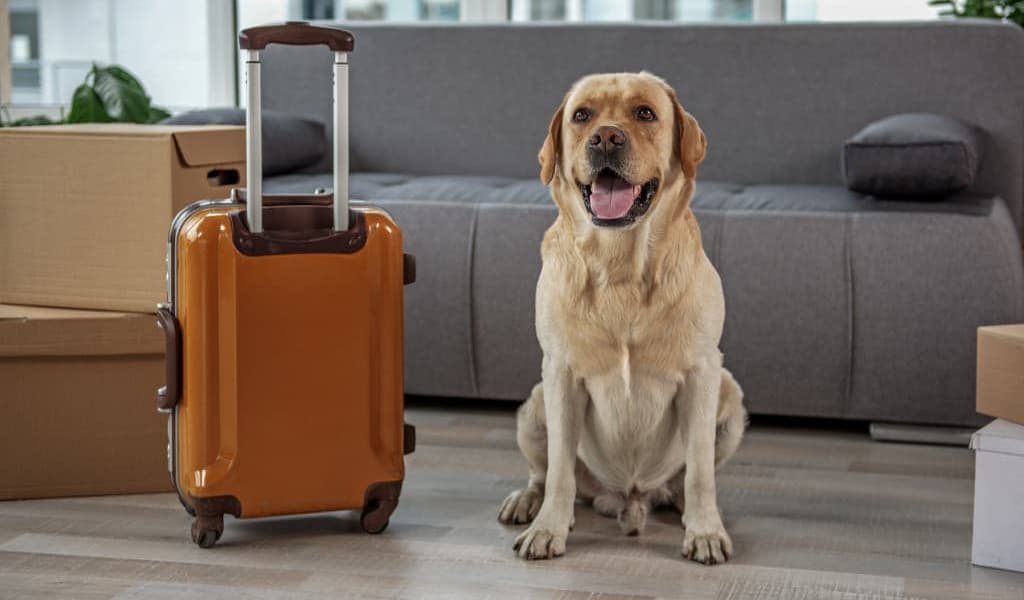ACCEPTANCE OF TERMS
By accessing or using the mymovingestimates.com website (“Site”) in any way you agree to and are bound by these Terms of Service (“TOS”).
mymovingestimates.com reserves the right to change the TOS and other guidelines or rules from time to time at its sole discretion. Your use of the Site will be subject to the most current version of the TOS, rules, and guidelines on the Site. Your continued use of the Site, or any materials or services accessible through it, will constitute acceptance of the modified Terms. If you breach any of the terms in this TOS, your license to use these services will be immediately terminated.
License
1.1 mymovingestimates.com grants User a limited non-exclusive, non-transferable license to use the Site within the United States of America.
This Agreement does not grant User or any other person or entity any license or other intellectual property rights under any patent, copyright, license, or other intellectual property right of mymovingestimates.com. mymovingestimates.com is the sole and exclusive owner of all intellectual property that arises out of this Agreement.
1.2 User may not attempt to alter the source code of the Site or make any attempt at reverse engineering or use the Site for any purposes not expressly set forth through this Agreement. Furthermore, User will not remove or alter the mymovingestimates.com name, logo, or other identifying marks from the documents produced by mymovingestimates.com for User. Under no circumstance may User be entitled to, or receive, any intellectual property rights of the Site.
1.3 User agrees and acknowledges that User is solely responsible for ensuring they have the proper systems with the necessary resources available for the use of the Site, which includes all web enabled devices owned and operated by User or User's employees, agents, or any party under User's control where User grants access.
1.4 User agrees and acknowledges that mymovingestimates.com may collect and use non-identifiable technical data and related information for users that request a quote. This includes the pages you view, the length of your visit to the Site, IP address, browser type.
1.5 User agrees not to modify, adapt, or translate any code on the Site. User further agrees not to reverse engineer, decompile, disassemble, or otherwise attempt to discover the source code of the Site. User further agrees not to upload any viruses or malicious code.
1.6 User may not use automated tools such as spiders, scrapers, or any type of bot on the Site. User may not use any tool, program, or other means which may place a heavy load on the Site's server or infrastructure. mymovingestimates.com in its sole discretion will determine what constitutes a heavy load on its servers, Site, or infrastructure.
1.7 User agrees that mymovingestimates.com may collect identifiable information that includes, but is not limited to full name of the client, moving from and to zip, city, state; phone number, email address, and relevant details about the service. It is your choice whether to provide us with the personally identifiable information, however, you may not be able to access certain portions of the Site, or we may be unable to respond to your inquiry effectively without this information.
1.8 Advertising disclosure: we will try to connect you with a third-party service provider who may serve your move and we may receive a compensation for sending this information. When you voluntarily submit personal information on Site, third-party service provider may contact you for services in which you express an interest. We do not associate any personal information we collect from you with information collected by our partners. The use of your personal information by our partners is regulated by their Terms of Services, not this Terms of Services.
1.9 If you access any third party’s website, service, or content from our Site, you do so at your own risk. By using the Services, you expressly release us (and our owners, employees, agents, affiliates, and/or licensors) from all liability arising from your use of any third-party website, information, materials, products, or services.
1.10 We may also provide your personally identifiable information to third-party service providers and partners that help us to provide you with products and services. These third-party service providers and partners have access to such information on a confidential basis, and only to the extent necessary to perform their requested functions. We do not provide your personally identifiable information to any third-party service or partner for their own marketing purposes without your prior request or consent.
Warranties
All Materials and services accessible through this Site are provided “as is” without warranty of any kind, either express or implied, including, but not limited to, the implied warranties of merchantability, or the warranty of non-infringement. User assumes all risks associated with use of these services.
In no event, including, without limitation, negligence, will mymovingestimates.com, its subsidiaries, affiliates, agents, officers, directors, employees, partners, or suppliers be liable to you or any third-party for any special, punitive, incidental, indirect, or consequential damages of any kind, or any damages whatsoever, including, without limitation, those resulting from loss of use, data, or profits, whether or not mymovingestimates.com has been advised of the possibility of such damages, and on any theory of liability, arising out of or in connection with the use of or the inability to use the Site, any unauthorized access to or alteration of your transmissions or data, any information that is sent or received or not sent or received, any failure to store or loss of data, files, or other content, any services that are delayed or interrupted, or any web services referenced or linked to or from this Site.
As part of our commitment to protecting your personal information, mymovingestimates.com have implemented various security measures to prevent accidental or unlawful destruction, loss, alteration, unauthorized disclosure, or access to your information, as well as any other unlawful processing. Nevertheless, mymovingestimates.com is not responsible for any loss User may incur through misuse of the services or failure to abide by the terms in this TOS.
YOU EXPRESSLY UNDERSTAND AND AGREE THAT: YOUR USE OF THE SITE OR SERVICES FROM THE SITE PROVIDED BY THIRD-PARTY COMPANIES ARE ALL AT YOUR SOLE RISK.
TO THE EXTENT NOT PROHIBITED BY LAW, IN NO EVENT WILL MYMOVINGESTIMATES.com BE LIABLE FOR PERSONAL INJURY, OR ANY INCIDENTAL, SPECIAL, INDIRECT OR CONSEQUENTIAL DAMAGES WHATSOEVER, INCLUDING, WITHOUT LIMITATION, DAMAGES FOR LOSS OF PROFITS, LOSS OF DATA, BUSINESS INTERRUPTION OR ANY OTHER COMMERCIAL OR PERSONAL DAMAGES OR LOSSES, ARISING OUT OF OR RELATED TO YOUR USE OR INABILITY TO USE THE SITE.
Miscellaneous
3.1 User will indemnify, defend and hold mymovingestimates.com, its Affiliates, current and former directors, members, officers, employees, contractors, stockholders, agents and representatives harmless against all claims, suits, demands, allegations, investigations or other actions and any damages, fines, costs, losses, fees, settlements arising therefrom (“Claim(s)”) relating to any breach of this TOS by User, any illegal activity involving the Site by User, or unauthorized modification of the Site by User.
3.2 If any term or provision of this TOS is invalid, illegal, or unenforceable in any jurisdiction, such invalidity, illegality, or determination that a term or provision was unenforceable will not affect any other term or provision of this TOS or invalidate or render unenforceable such term or provision in any other jurisdiction. Upon such determination that any term or other provision is invalid, illegal, or unenforceable, this TOS will be modified to reflect the original intent of the parties as closely as possible.
3.5 This TOS will be governed by and construed in accordance with the internal laws of New York without giving effect to any choice or conflict of law provision or rule (whether of New York or any other jurisdiction). Any legal suit, action or proceeding arising out of or based upon this TOS must be instituted in the courts of Kings County, New York, and each party irrevocably submits to the exclusive jurisdiction of such courts in any such suit, action or proceeding. The parties irrevocably and unconditionally waive any objection to the laying of venue of any suit, action or any proceeding in such courts and irrevocably waive and agree not to plead or claim in any such court that any such suit, action or proceeding brought in any such court has been brought in an inconvenient forum.
Privacy Policy
MyMovingEstimates.com respects the privacy of our customers and individuals using our Site. This Privacy Policy is to keep you informed about the types of information collected on MyMovingEstimates.com and how the information is used and protected. We reserve the right to change and update this Privacy Policy at any time.
What information do we collect?
User agrees and acknowledges that mymovingestimates.com may collect and use non-identifiable technical data and related information for users that request a quote. This includes the pages you view, the length of your visit to the Site, IP address, browser type, mouse movements and clicks.
User agrees that mymovingestimates.com may collect identifiable information that includes, but is not limited to full name of the client, moving from and to zip, city, state, phone number, email address, and other relevant details about the move. It is your choice whether to provide us with the personally identifiable information, however, you may not be able to access certain portions of the Site, or we or third-parties may be unable to respond to your inquiry effectively without this information.
How do we protect your information?
We implement a variety of security measures to maintain the safety of your personal information when you submit a moving quote request. All supplied sensitive information is transmitted via Secure Socket Layer (SSL) technology.
Do we use cookies?
Yes. We use cookies and store them on the Users computer. We may contract with third-party service providers to assist us in better understanding our site visitors. These service providers are not permitted to use the information collected on our behalf except to help us conduct and improve our business.
Do we disclose any information to outside parties?
Personally identifiable visitor information may be provided to other parties for marketing, advertising, or other uses.
Third party links
Occasionally, at our discretion, we may include or offer third party products or services on our website. These third-party sites have separate and independent privacy policies. We have no responsibility or liability for the content and activities of these linked sites. You visit third party websites at your own risk. Nonetheless, we seek to protect the integrity of our site and welcome any feedback about these sites.
Children’s Online Privacy Protection Act Compliance
We are in compliance with the requirements of COPPA (Children’s Online Privacy Protection Act). If you are under 13 years of age, you must not submit your information on this site. Our website, products and services are all directed to people who are at least 18 years old or older.
Pertaining to Consumers in California
Because we value your privacy, we have taken the necessary precautions to be in compliance with the California Online Privacy Protection Act & California Privacy Rights Act (CPRA). We therefore will not distribute your personal information to outside parties without your consent. If you choose to submit your information through our Site, we will connect you with moving service providers or other third parties in our network who can service your move. We receive compensation from third parties for this service. By law this is considered “selling of information”. The purpose of our business is to connect you with third-party service providers.
Users in California who do not wish to have their information sold should not fill out the quote request, should not call the number on the website and should exit this Site.
"Introducing California Residents to the California Consumer Privacy Act (CCPA) & California Privacy Rights Act (CPRA): Our Commitment to Your Privacy"
Under California law, customers residing in California are entitled to ask for information on how we distribute specific categories of data with other parties for marketing-related activities. If you wish to acquire this disclosure, kindly send an email to us at info@mymovingestimates.com. Make sure to include "California Privacy Rights Request" in your email subject line and state your name.
Understanding Your Rights and Options
As a California resident, you're protected under the California Consumer Privacy Act (CCPA) and California Privacy Rights Act (CPRA), which gives you rights regarding your personal information. This part provides a description of your rights under the CCPA and CPRA guidelines on how to use them.
The Right to Request Deletion of Data:
As a consumer, you possess the right to request the removal of any of your personal data that we've gathered and held, though there are certain exceptions. On receiving and confirming the validity of your request, our team, along with our service providers, will delete your personal data from our systems unless a particular exception necessitates otherwise. However, your deletion request may be denied under circumstances where we or our service providers need to:
- Adhere to a legal obligation.
- Detect, deter, and safeguard against malicious, deceptive, or illegal activities, and take legal action against those responsible.
- Troubleshoot our offerings to identify and fix any errors that may hinder their intended operation.
The Right to Access Specific Information and Data Portability: As a consumer, you possess the right to ask us for details regarding our gathering and use of your personal data over the last 12 months. Upon receipt and validation of your legitimate consumer request, we will provide you with:
- Your individual personal details that we've collected, which is part of what's known as a data portability request.
- The categories of personal data we've compiled from you.
- The sources from which we obtained the personal data.
- The business or commercial intent behind our collection or sale of your personal data.
- Third-party entities with whom we've shared your personal details.
If your personal information has been sold or disclosed for a business reason, we will provide two separate lists:
- One list detailing sales, noting the types of personal data bought by each kind of recipient.
- Another for business purpose disclosures, identifying the types of personal data obtained by each category of recipient.
Adhering to our Non-Discrimination and Non-Retaliation Commitment, we will not:- Provide you with goods or services of inferior or diminished quality.
- Impose differential pricing for the same type of goods or services.
- Deny you access to our goods or services.
We are dedicated to respecting your rights and ensuring no forms of discrimination or retaliation occur. We fully understand and appreciate the non-discrimination requirements set forth in the CCPA. Our commitment extends to every aspect of our business interactions, ensuring that every action we take, every policy we implement, respects these requirements, and upholds the spirit of fairness.
Usage Monitoring with Google Analytics
We cooperate with third-party providers like Google Analytics to better comprehend the usage of our Service. What is Google Analytics?
Google Analytics is a service rendered by Google that assists us in tracking our website traffic and generating analytical reports. This collected data is used by Google to monitor the usage of our Service.
Data Sharing
Google may share this information with its other services. Furthermore, it can use this data to contextualize and personalize advertisements on its proprietary advertising network.
Opting Out
If you would rather not have your activity on our Service shared with Google Analytics, you can opt for a specific browser add-on - the Google Analytics opt-out extension. This tool prevents Google Analytics JavaScript files (ga.js, analytics.js, and dc.js) from sharing your visit information with Google Analytics.
Ad Viewing
Please note, opting out of Google Analytics tracking does not mean you will stop seeing advertisements on the internet. However, these advertisements will no longer be tailored to your interests based on your browsing habits.
Additional Information
For more details about Google's privacy practices, you can visit the Google Privacy & Terms webpage: https://policies.google.com/privacy?hl=en. For further understanding of Google Ads and how to opt-out from Google Analytics, you can follow these links: Google Ads: https://support.google.com/ads/answer/2662856?hl=en&ref_topic=2971788 Google Analytics Opt-out: https://tools.google.com/dlpage/gaoptout/. Top of Form
How to use Your Rights to Access, Transfer, and Erase Data:
As outlined previously, you have certain rights to access, move, and remove your data. To exercise these rights into practice, follow the steps detailed below:
- Submission of Request: Send us a verified consumer request. You can either visit mymovingestimates.com/legal to submit your request to delete or modify your information, or email us directly at info@mymovingestimates.com.
- Verification: We will verify our records to confirm you are authorized to submit a request.
- Frequency of Requests: Be aware that you're allowed to make a verified consumer request for access or data transfer only twice in a 12-month window.
- Who Can Submit: This request can only be made by you, or someone legally registered with the California Secretary of State who you've granted authority to act on your behalf. If required, this verified consumer request can be submitted on behalf of your child as well.
- Request Details: Your request must include: Sufficient information that enables us to verify that you are the individual about whom we've collected personal data or are an authorized representative. An explicit description of your request that provides us with a clear understanding, facilitating a proper evaluation and response.
- Data Use: The personal data provided in such a request will solely be used to authenticate your identity or authority.
Our Process for Responding to Verified Consumer Requests:
The structure of our response process to a verified consumer request is as follows:
- Delivery Method: We will provide our written response via email to the email address we have on file for you.
- Initial Response Timeline: We strive to respond to your verified consumer request within 14 business days of receipt.
- Extended Timeline: In certain circumstances, we may need up to 30 additional business days to respond. If this is the case, you will receive a written notification stating the reason for the delay and the expected length of the extension.
- Disclosure Scope: Our response will only include disclosures covering the 12-month period immediately preceding the receipt of your verified consumer request.
- Explanation for Non-compliance: If we are unable to comply with your request for any reason, our response will outline the specific reasons for non-compliance.
With any questions, please reach us at info@mymovingestimates.com







